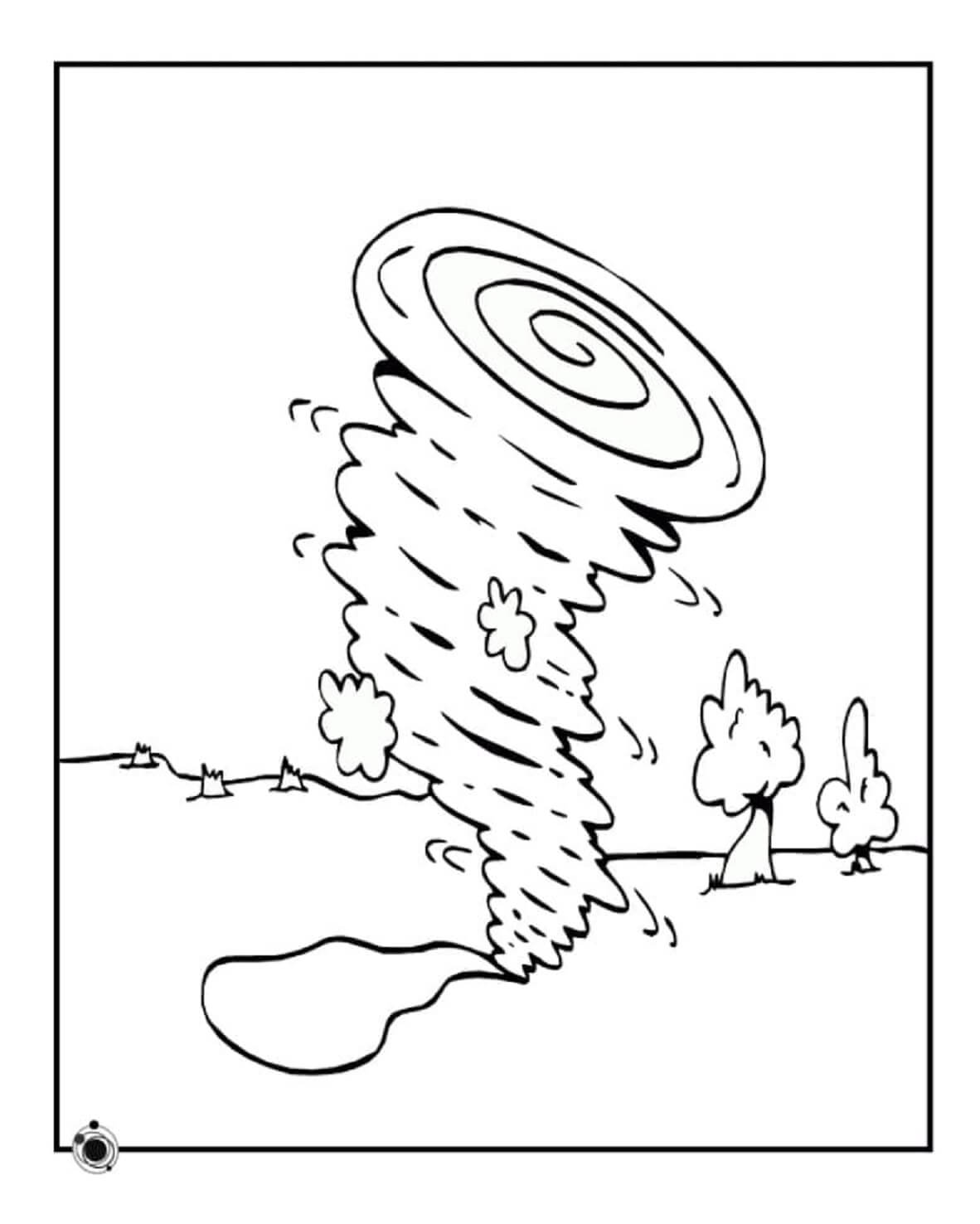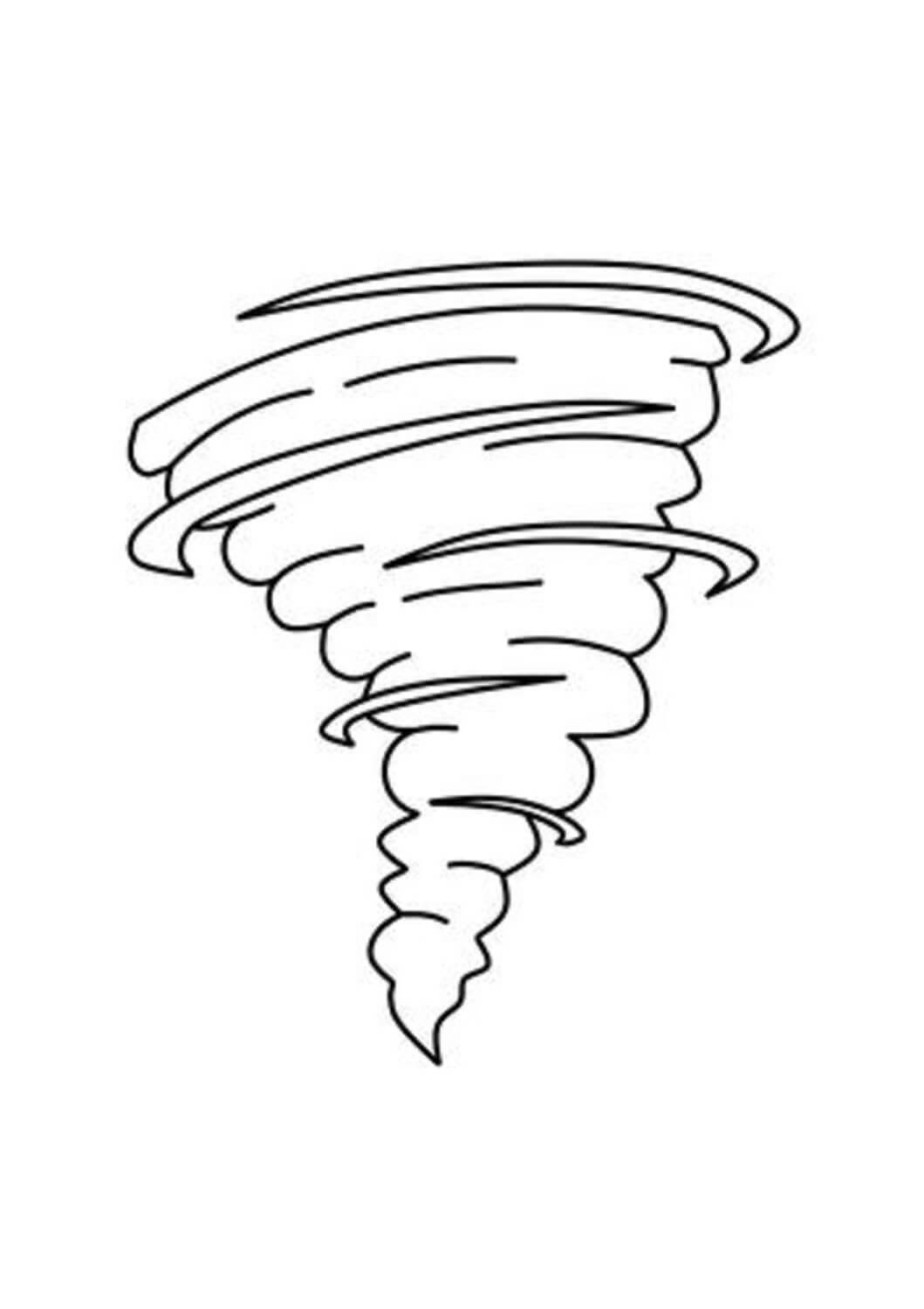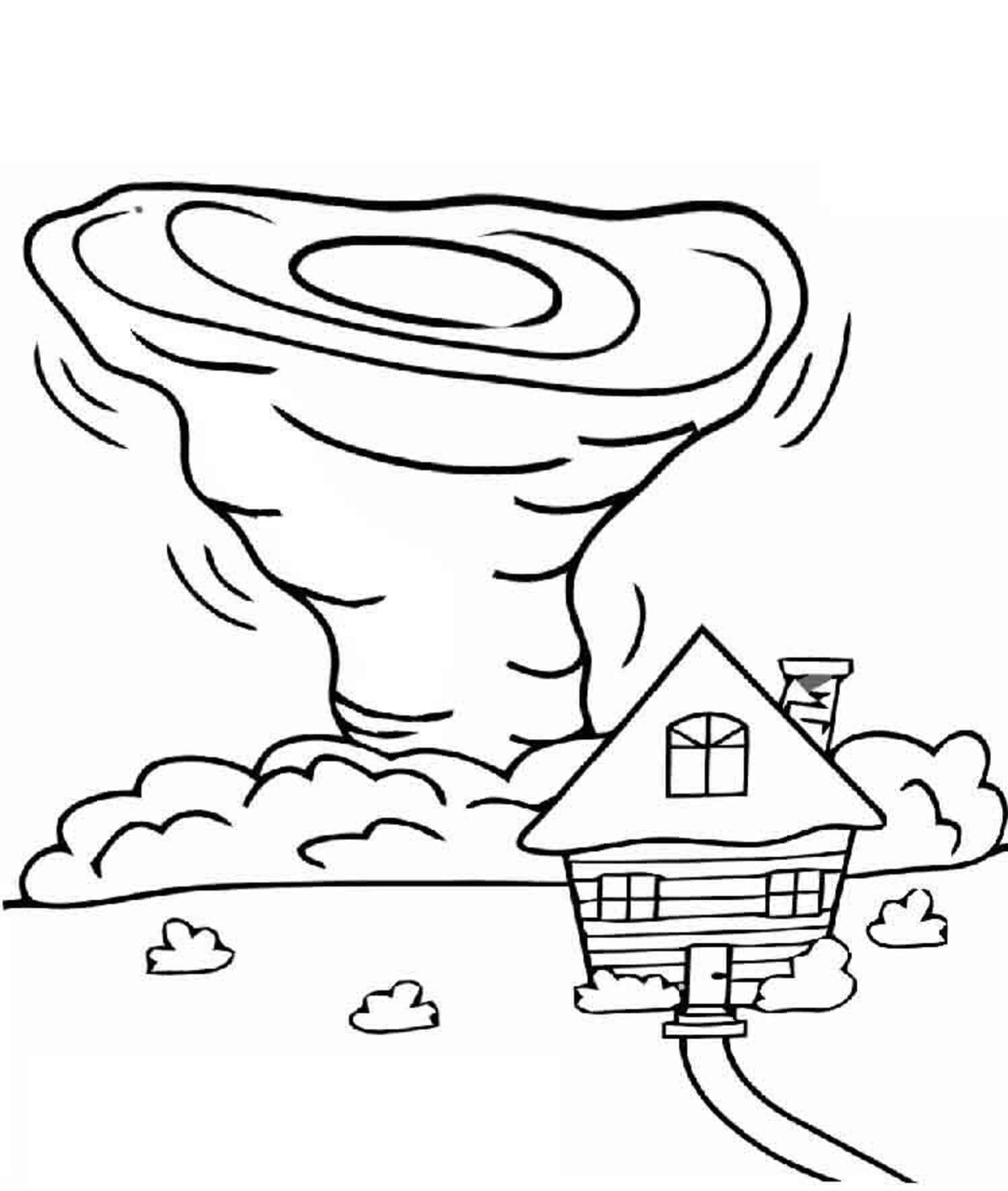On the night of June 16, 1992, the quiet city of Cokato, Minnesota, was irrevocably altered by the raw power of nature. A devastating tornado tore through the heart of the community, leaving behind a trail of unimaginable destruction and forever etching itself into the memories of those who lived through it. This event, often referred to simply as the Cokato Tornado, stands as a stark reminder of the vulnerability of even the most resilient towns to the fury of severe weather.
More than just a meteorological event, the Cokato Tornado became a defining moment for the town, a testament to its strength, and a crucial case study in understanding the profound impact of F5 tornadoes. As we delve into the details of that fateful night and its aftermath, we aim to shed light on the science, the human stories, and the enduring legacy of this significant weather phenomenon.
Table of Contents
- The Unforgettable Night: June 16, 1992
- An F5 Anomaly: The Cokato Tornado's Unique Classification
- Eyewitness Accounts: Memories of the Cokato Tornado
- Anatomy of Destruction: The Path of the Cokato Tornado
- Cokato's Vulnerability: A High-Risk Area for Tornadoes
- Modern Weather Reporting and Preparedness
- The Hazards of a Tornado: What to Expect
- Rebuilding and Resilience: Cokato's Enduring Spirit
The Unforgettable Night: June 16, 1992
At precisely 11:13 p.m. on June 16, 1992, a monstrous tornado descended upon downtown Cokato, Minnesota. The city was suddenly engulfed by tornadic winds of incredible force. This was not just another severe storm; it was an event that would reshape the landscape and the collective memory of the community. The immediate impact was catastrophic, with debris and destruction left in its wake. Homes, businesses, and infrastructure bore the brunt of the storm's fury, painting a grim picture of devastation.
The suddenness and intensity of the Cokato Tornado meant that many were caught off guard. The quiet of the night was shattered by the roar of the wind, followed by the terrifying sounds of structures collapsing. For those directly in its path, it was a fight for survival, a desperate search for shelter against an unseen, overwhelming force. The events of that night serve as a powerful testament to the destructive potential of nature when it unleashes its full power.
An F5 Anomaly: The Cokato Tornado's Unique Classification
What made the Cokato Tornado particularly significant in meteorological history was its classification. According to records, this was the only F5 tornado to occur in the United States in 1992. The Fujita Scale, or F-scale, measures the intensity of tornadoes based on the damage they cause, with F5 being the highest and most destructive category. An F5 tornado signifies incredible winds, estimated at 261-318 mph (420-512 km/h), capable of leveling strong-frame houses, throwing vehicles, and even stripping asphalt from roads.
The rarity of an F5 designation underscores the extreme nature of the Cokato Tornado. While many tornadoes cause significant damage, very few reach this highest echelon of intensity. This classification not only highlights the immense power unleashed on Cokato but also places the event in a unique position within the annals of U.S. weather history, making it a crucial reference point for meteorologists and disaster preparedness experts alike.
Eyewitness Accounts: Memories of the Cokato Tornado
Beyond the scientific classifications and damage assessments, the true impact of the Cokato Tornado is best understood through the experiences of those who lived through it. Three people who lived in or around Cokato at the time shared their memories of that day, offering a poignant human perspective on the disaster. These personal narratives bring to life the terror, the confusion, and ultimately, the resilience that emerged from the wreckage.
One such vivid detail that illustrates the sheer force of the storm comes from a report: the tornado that destroyed a house the prior evening also deposited a piece of farm machinery in the wreckage. Such an anecdote paints a clear picture of the incredible energy at play, capable of lifting and moving heavy objects over considerable distances, turning familiar landscapes into unrecognizable scenes of chaos.
The Immediate Aftermath: A Town Transformed
The morning after the Cokato Tornado revealed a town utterly transformed. Photographs, such as one courtesy of Gary Baker, captured the devastation. One particular photograph, taken of Broadway Avenue after the tornado (where Double Shot and First National Bank are today), shows the extent of the destruction in what was once the vibrant heart of Cokato. Buildings were reduced to rubble, trees were splintered, and the familiar streetscape was gone.
The park, located at the corner of Broadway Avenue and Third Street in Cokato, the site of the former State Bank building which was damaged, also bore the scars of the storm. These landmarks, once symbols of community life, became stark reminders of the night's events. The immediate aftermath was a period of shock, disbelief, and the daunting realization of the monumental task of recovery ahead.
The Wider Impact: Beyond Cokato's Borders
While Cokato bore the direct hit, the impact of the tornado was not immediately apparent to everyone in the surrounding areas. On June 16, 1992, many outside of town, including those in nearby Dassel, did not even know anything had happened. It was not until they saw it on the news, or tried to come to town, that they realized the devastation caused. This highlights the localized nature of tornadoes and the challenges of immediate information dissemination in the early 1990s.
The realization of the catastrophe spread gradually, drawing in help and concern from neighboring communities. The Cokato Tornado, while centered on one town, had a ripple effect, bringing into focus the interconnectedness of small towns and the collective spirit that arises in times of crisis. The phrase "the small towns are all about" truly came to life in the aftermath, as communities rallied to support Cokato.
Anatomy of Destruction: The Path of the Cokato Tornado
Understanding the precise path and characteristics of the Cokato Tornado provides crucial insights for future preparedness. According to reports, the tornado was located 5 miles southwest of Cokato, or 11 miles northeast of Hutchinson, moving east at 20 mph. This information, combined with ground reports, allows meteorologists to reconstruct the event and understand how such a powerful storm can develop and track.
Local reports indicated a tornado near Lake Shore, and a specific report of a tornado on the ground estimated 5.5 to 7 miles north of the MN State Highway 210 and Bridgeman Road intersection. These real-time observations, though fragmented, were vital in tracking the storm's progression and issuing warnings, albeit sometimes after the initial impact due to the rapid development of such events.
Cokato's Vulnerability: A High-Risk Area for Tornadoes
The Cokato Tornado was not an isolated incident in an otherwise calm region. In fact, Cokato, MN, is considered a high-risk area for tornadoes. This designation is not arbitrary; it is based on historical data and the frequency of tornadic activity in the region. Living in such an area necessitates a heightened awareness of severe weather patterns and robust preparedness strategies.
Understanding the geographical and climatological factors that contribute to this risk is paramount for residents and emergency services. The unique atmospheric conditions that often develop over the Midwest make Minnesota, including the Cokato area, susceptible to severe thunderstorms capable of producing tornadoes.
Historical Context: Minnesota's Tornado Legacy
The 1992 Cokato Tornado, while devastating, was not the first major tornado to strike the region. According to records, the largest tornado in the Cokato area prior to 1992 was an F4 in 1965 that caused 175 injuries and 3 deaths. This historical precedent highlights a long-standing pattern of severe weather in Minnesota. Furthermore, historical pictures document the destruction from an F4 tornado/cyclone on the cities of St. Cloud, Sauk Rapids, and Rice, Minnesota, on April 14, 1886, demonstrating that powerful tornadoes have been a threat for well over a century.
These historical events underscore the importance of continuous vigilance and preparedness. Each past tornado, from the F4 in 1886 to the F4 in 1965 and the F5 Cokato Tornado, contributes to a collective understanding of the risks and the need for resilient communities.
Understanding Tornado Risk Calculation
How is tornado risk calculated for a specific area like Cokato? The general principle is that tornado risk is calculated from the destruction path that has occurred within 30 miles of the location. This methodology provides a localized assessment of historical tornado activity, allowing for better risk mapping and emergency planning. By analyzing the frequency and intensity of past tornadoes within a defined radius, meteorologists and urban planners can identify areas with higher probabilities of future tornadic events.
This data-driven approach is crucial for informing building codes, developing effective warning systems, and educating the public about the importance of having a tornado preparedness plan. It moves beyond anecdotal evidence to provide a scientific basis for understanding and mitigating risk.
Modern Weather Reporting and Preparedness
The landscape of weather reporting and preparedness has evolved significantly since 1992. Today, advanced technologies and real-time data collection provide more comprehensive insights into severe weather events. For instance, a recent report details severe weather events, including tornadoes, hail, and damaging winds, that occurred in Minnesota based on storm reports from the National Weather Service (NWS) and other reliable sources. This data is sourced from tornado, hail, and wind reports, focusing on events within Minnesota, illustrating the meticulous detail with which severe weather is now tracked.
Modern systems can provide immediate updates, such as a tornado warning being in effect for Meeker and Wright counties until 6 p.m., with areas impacted including Cokato, Howard Lake, and Waverly. This level of specificity and timeliness is a critical improvement, allowing residents more time to seek shelter. The development of hail maps, for example, showing impacts across multiple states and cities, demonstrates the scale and precision of contemporary meteorological analysis, helping to assess property risks and understand the broader implications of severe weather.
The Hazards of a Tornado: What to Expect
Understanding the specific hazards associated with a tornado is vital for personal safety and community resilience. The Cokato Tornado exemplified many of these dangers. The primary hazard is, of course, the tornado itself, often accompanied by half-dollar size hail, which can cause significant damage even before the tornado hits.
The impact of a tornado is multifaceted and devastating:
- Flying Debris: This is arguably the most dangerous aspect. Flying debris will be dangerous to those caught without shelter. Anything not anchored down, from small objects to large pieces of structures, becomes a deadly projectile.
- Structural Damage: Mobile homes will be damaged or destroyed, and even well-built homes can suffer severe damage to roofs, windows, and vehicles. The sheer force of the wind can tear apart buildings, making even seemingly sturdy structures vulnerable.
- Infrastructure Collapse: Power lines, communication towers, and other essential infrastructure are highly susceptible to damage, leading to widespread power outages and communication blackouts, complicating rescue and recovery efforts.
These hazards underscore the critical importance of heeding tornado warnings, seeking immediate shelter in designated safe areas, and having an emergency plan in place. Preparedness can significantly mitigate the risk of injury or fatality during such events.
Rebuilding and Resilience: Cokato's Enduring Spirit
In the wake of the Cokato Tornado, the community faced the monumental task of rebuilding. The spirit of Cokato, however, proved to be as strong as the winds that struck it. The process of recovery was long and arduous, requiring immense effort from residents, volunteers, and governmental agencies. The damaged State Bank building, the transformed Broadway Avenue, and countless homes and businesses had to be reconstructed or repaired.
The Cokato Tornado serves as a powerful narrative of both destruction and incredible human resilience. It reminds us that while we cannot prevent natural disasters, we can prepare for them, support each other through them, and emerge stronger on the other side. The lessons learned from that night continue to inform disaster preparedness and community planning in Cokato and across high-risk areas in Minnesota, ensuring that the legacy of June 16, 1992, is one of enduring strength and vigilance.
The story of the Cokato Tornado is a compelling chapter in Minnesota's history, a testament to the power of nature, and a beacon of community spirit. We hope this deep dive into the event has provided valuable insights and a greater understanding of its significance.
Do you have memories of the Cokato Tornado or questions about severe weather preparedness? Share your thoughts in the comments below! Your experiences and insights contribute to our collective knowledge and help others. If you found this article informative, please consider sharing it with your friends and family. Don't forget to explore other articles on our site for more insights into historical events and community resilience.


